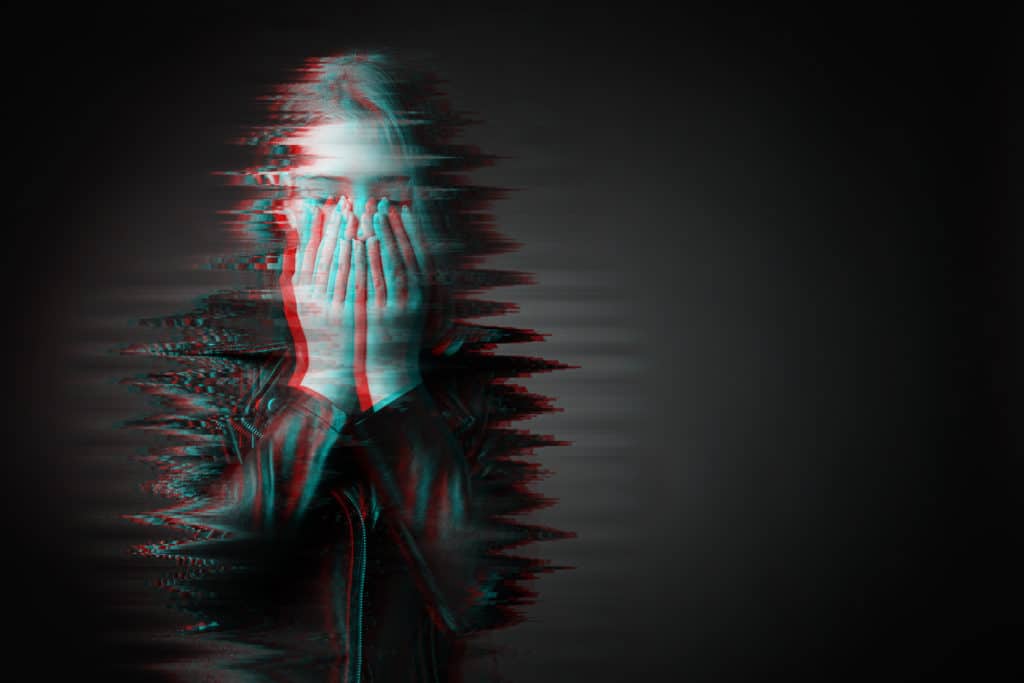Searching for help with drug and/or alcohol addiction? Call us now at (800) 643-2108
What Drugs Cause Major Shifts in Mood?
Exposure to some substances and medications can cause great shifts in mood. Most abused drugs affect moods, such as cocaine, alcohol, heroin, morphine, fentanyl, oxycodone, cannabis, amphetamines, and psilocybin.
Prescription medications like sedatives, anxiolytics (anxiety-reducing drugs), interferons, hypertensives, and psychotropic drugs can also cause major shifts in mood.
Depressants and stimulants are two main types of mood-altering drugs that change the brain chemistry to produce mood changes.
While short-term use of these drugs can be effective for many physical and psychological problems, chronic drug exposure causes long-term changes in the brain’s reward circuit.
Therefore, substance users have an increased risk of developing mood disorders.
Substance-induced Depressive Disorder
Substance-induced depressive disorders are chronic mental health conditions characterized by pronounced changes in mood. The symptoms emerge within a month of starting substance abuse.
Depression that follows substance withdrawal is also categorized as substance-induced depressive disorder. The duration of symptoms varies depending on a range of factors, including the abused substance, frequency of use, duration of use, dose, and half-life of the drug.
A family history of substance abuse, antisocial behavior, and stressful life events can contribute to a greater risk of substance-induced depressive disorder.
Individuals affected by the substance-induced depressive disorder are more likely to report insomnia, suicidal thoughts, and feelings of worthlessness than those with major depressive disorder.
Substance-induced depressive disorders result from abnormal changes in neural circuits caused by certain substances, such as alcohol, cannabis, cocaine, amphetamines, psilocybin, and benzodiazepines.
According to research, substance-induced depressive disorders are more common in people who abuse intoxication-causing drugs, such as stimulants, hallucinogens, and opioids.
Research also shows that an estimated 40 to 60% of people with alcoholism and 55% of people with opioid use disorder experience episodes of severe depression.
Substance-Induced Depressive Disorders Symptoms
The symptoms of substance-induced depressive disorders tend to be similar to those of major depressive disorder.
- Pervasive low mood
- apathy
- poor levels of concentration
- decreased libido
- fatigue or low energy levels
- suicidal thoughts
- increased irritability
- low self-esteem
- loss of interest or pleasure in normally pleasurable activities
- appetite changes
- muscle tension
- excessive weight gain or weight loss.
- Some people may also experience delusions or hallucinations.
The symptoms may also vary depending on the drug.
Opioid-induced Depressive Disorder
Opioids, the most commonly prescribed pain medication, can cause numerous adverse effects on the user’s health, including dysregulation of natural reward processes, neurohormonal deficits, and suppression. Prolonged use of opioids has been associated with anxiety and stress-related disorders and major depressive disorder.
About 7.8 million adults with mental illness receive over 50% of the almost 200 million annual opioid prescriptions.
Research suggests that prescription opioid use contributes to a greater clinical depression or major depressive disorder risk.
Empirical findings suggest a potential association between mood swings and drugs with sleep-inducing effects, such as opioids.
While MDD or major depressive disorder has been associated with opioid use, it’s uncertain whether depression is a cause or consequence of opioid use.
Preexisting psychiatric comorbidities (concurrent presence of one or more health conditions) complicate the evaluation of the effects of opioids through randomized controlled trials.
Metabolic disorders and mental health conditions are the primary risk factors for opioid abuse or overdose. Evidence suggests that people with mood and anxiety disorders are more likely to be prescribed opioids for long periods.
Research published in the Journal of General Internal Medicine shows clear evidence that opioids prescribed for non-cancer and non-HIV pain inflate the risk of the development of clinical depression in opioid-naive individuals with no history of substance use disorder or depression.
Researchers from the Washington University School of Medicine also found that the risk of major depressive disorder increased with the increase in the dose of the opioid and duration of use.
Though the role of opioids in the pathophysiology of major depressive disorder is uncertain, the physical symptoms of opioid-induced depressive disorder are attributable to dysregulation of reward circuitry, which causes reduced reception and relief generation.
Opioids work by binding to specific opioid receptors in the nervous system. The biochemical and physiological effects produced by the opioid vary depending on the type of receptor it binds to and its affinity for the receptor.
Each group of opioid receptors produces different neurological responses and, thus, physiological and psychological symptoms.
Long-term use of opioids may result in the saturation of the opioid receptor system, affecting mood and contributing to the risk of developing a major depressive disorder.
Genetic liability for prescription opioid use may also contribute to major depressive disorder, anxiety, and stress-related disorders.
A person affected by opioid-induced depressive disorder usually exhibits low mood, inability to enjoy previously pleasurable activities, feelings and thoughts of worthlessness, helplessness, apathy, inappropriate regret or guilt, poor concentration and memory, reduced sex drive, thoughts of death and suicide, hypersomnia or oversleeping, irritability, and withdrawal from social activities among other symptoms of major depressive disorder.
Cocaine-induced Depressive Disorder
Depression is common among individuals affected by cocaine use disorder. The more chronic the cocaine use disorder, the higher the risk of inflicting long-term brain damage and developing clinical depression.
Cocaine exposure can induce significant changes in the central nervous system, including the blockage of dopamine transporter protein. This protein recycles dopamine released during neural signaling.
The drug forms a complex with the dopamine transporter protein by binding to it. The transporter protein’s blocking inhibits dopamine production, causing the individual to consume cocaine to feel pleasure.
When the transporter protein fails to perform its reuptake function, dopamine accumulates at neural junctions that facilitate communication between the cells.
The increased concentration of the neurotransmitter at these junctions activates postsynaptic dopamine receptors, which leads to changes in the brain’s reward pathway, causing compulsive use of cocaine.
Cocaine-induced neural changes can cause various psychiatric symptoms, including anxiety and depressive disorders. While the risk of developing depression is higher in the case of chronic use of cocaine, acute exposure to the drug can also be detrimental to the user’s mental health.
Acute and continuous exposure to cocaine can cause psychosis characterized by paranoia, hallucinations, irritability, and impairment in certain psychotherapeutic functions, all of which are symptomatic of major depressive disorder—individuals with preexisting psychosis experience more severe symptoms, such as delirium and aggressiveness.
Chronic exposure to cocaine adversely alters brain chemistry, intensifying and prolonging dysphoria and making it harder for the user to feel happy.
Many people use the drug to combat cocaine-induced depression. However, they end up worsening depression symptoms and the likelihood of achieving long-term recovery.
Cocaine increases happy hormones, such as noradrenaline, serotonin, and dopamine. Euphoria arises from the higher concentration of these chemicals in the brain.
A recovery period follows the euphoric state induced by cocaine, during which chemicals return to normal levels, causing the person to feel worse.
Depression also occurs as a result of cocaine withdrawal. Post-cocaine depression is more marked in individuals with cocaine use disorder than in occasional and acute drug users.
Unlike opiates and alcohol, cocaine does not cause physiological withdrawal symptoms. However, cocaine withdrawal is marked by chronic psychological symptoms, such as irritability, difficulty concentrating, increased appetite, depressed mood, vivid and unpleasant dreams, and agitation.
Cocaine-induced depressive disorder is caused by damage to the brain’s pleasure center and programmed death of brain cells, both of which occur due to long-term cocaine use. Cocaine-induced depressive disorder is characterized by chronic depression and acute depressive episodes.
Alcohol-induced Depressive Disorder
Alcohol use disorder often co-occurs with depressive disorders. Alcohol consumption is linked to a wide spectrum of physical and mental health problems. Long-term abuse of alcohol leads to severe cognitive impairments. From social skills to memory to mood, alcohol has adverse effects on almost all brain functions.
Psychiatric disorders are common in individuals affected by alcoholism. About 37% of people with alcohol use disorder have severe psychiatric disturbances, with anxiety and depression being the most prevalent symptoms.
The dual diagnosis of alcohol use disorder and major depressive disorder is fairly common.
Among those with the dual diagnosis, a distinction is typically made between depressive episodes that do not diminish with abstinence (independent episodes) and depressive episodes that diminish with abstinence (substance-induced episodes).
Depressive symptoms caused by alcohol withdrawal abate after 3 to 4 weeks of abstinence.
People who use other drugs in conjunction with alcohol are more likely to suffer from substance-induced depressive episodes.
Several depressive disorders are associated with alcohol abuse, though it is difficult to separate cause and effect. Psychiatric disorders that often co-occur with alcoholism vary depending on gender.
A dual diagnosis of major depressive disorder and alcohol use disorder is more common in women. Men affected by alcoholism often have a dual diagnosis of schizophrenia.
Each person with a co-occurring diagnosis of alcohol use disorder and depression has a different experience.
Some people resort to alcohol to combat preexisting depression, while some develop depression because of alcohol intake.
Though alcohol seems to have stimulant-like properties, it acts as a depressant. The substance disrupts the delicate balance of chemicals that the body requires to function properly.
The joy, euphoria, and pleasure induced by alcohol are attributable to its ability to trigger dopamine release. In addition to releasing dopamine, alcohol also interferes with the release of serotonin and norepinephrine, both of which are involved in mood regulation.
The neural changes caused by the long-term use of alcohol can factor into psychiatric problems like depression.
The alcohol-induced depressive disorder may not include some symptoms of major depressive disorder, such as psychomotor agitation or retardation, suicidal ideation, feelings of worthlessness, and loss of interest or pleasure in previously enjoyable activities.
Nonetheless, the symptoms may vary from person to person.
The pathophysiology observed in patients with alcohol use disorder is somewhat similar to those of major depressive disorder.
For example, dysregulation of the main endocrine stress system increased non-specific inflammatory biomarkers and changes in the mesolimbic reward system.
Substance-induced Bipolar Disorder
A dual diagnosis of bipolar disorder and substance misuse is dangerous. Substance-induced bipolar disorder is characterized by hypomania, mania, and major depressive episodes resulting from neural changes caused by addiction or substance dependence.
The severity of the comorbid bipolar disorder varies depending on the individual’s mental health history, nature of the abused substance, frequency of abuse, and duration.
As the precise pathophysiology of bipolar disorder is not well understood, it can be difficult to tell whether the condition is the cause or consequence of substance abuse.
Bipolar disorder can also occur by the chance association during substance use disorder treatment, particularly in individuals genetically susceptible to mood disorders.
A wide range of drugs can cause manic symptoms, including amphetamine, phencyclidine, captopril, levodopa, alprazolam, corticosteroids, chloroquine, baclofen, thyroxine, and anabolic-androgenic steroids.
Addiction causes long-term structural changes to the brain. Almost all abused drugs target the brain’s reward system, from opioids to cocaine to nicotine. Drugs trigger the release of dopamine to produce feelings of euphoria.
Both substance use disorder and bipolar disorder are characterized by abnormal concentrations of mood-regulating neurotransmitters in the brain. Substance-induced bipolar disorder is a side effect of actively using a drug or going through withdrawal.
The occurrence of manic symptoms is more common in individuals actively engaging in substance abuse.
People with substance-induced bipolar disorder experience periods of abnormally-elevated happiness, followed by or preceded by periods of depression.
A bipolar disorder caused by stimulating substances is characterized by manic symptoms, such as inflated self-esteem, increased activity or energy, racing thoughts, decreased need for sleep, distractibility or low levels of concentration, unusual talkativeness, poor decision-making, and reckless behavior.
Periods of depression are more common in individuals abusing depressants. A person going through a depressive phase has a negative outlook on life and may experience crying.
Other symptoms include loss of interest or pleasure in all previously enjoyed activities, significant weight loss or weight gain, insomnia or hypersomnia, restlessness, fatigue and decreased energy levels, indecisiveness, and suicidal ideation.
The risk of suicide is high during this phase. About 6% of people with bipolar disorder committed suicide over 20 years, while 30 to 40% inflicted non-suicidal self-injury.
Cocaine-induced Bipolar Disorder
Bipolar disorder often co-occurs with cocaine use disorder. Cocaine abuse is more common among people with bipolar disorder than the general population.
Cocaine affects the brain’s limbic system to deliver addictive and psychoactive effects. The limbic system is a set of interconnection regions that regulate pleasure and motivation, both of which are affected in bipolar disorder. The drug causes dopamine buildup in brain regions that have dopamine transporters.
The brain’s limbic system has high concentrations of dopamine-responsive cells that control emotional responses and link memories with emotions. Though the neurobiological underpinnings of bipolar disorder are not well-understood, the pathophysiology of both manic and depressive phases of the disorder can be explained through the dopamine hypothesis.
According to the dopamine hypothesis, the hyperactivity of dopamine receptors in certain brain regions contributes to positive symptoms of bipolar disorder.
In contrast, negative symptoms are attributed to the hypofunction of the mesolimbic dopamine system.
Studies show that diminished or impaired mesolimbic dopamine system function occurs due to a defect in the glutamate-stimulated release of dopamine in the neural circuit that acts as an interface between motivation and action.
The former is typically considered the primary disorder in a dual diagnosis of cocaine use disorder and bipolar disorder.
However, people with bipolar disorder often turn to stimulants like cocaine to combat depressive symptoms, such as hopelessness, self-loathing, concentration problems, irritability, fatigue, and sleep problems.
The pathophysiology of both cocaine use disorder and bipolar disorder involves abnormal levels of functionality of glutamate, norepinephrine, serotonin, and dopamine.
Therefore, cocaine abuse can aggravate depressive and manic symptoms in individuals with preexisting bipolar disorder and vice versa.
Opioid-induced Bipolar Disorder
Opioid abuse is often accompanied by manic, hypomanic, or depressive symptoms, all characteristic of bipolar disorder. Opioid users with a family history of psychiatric illnesses may be more predisposed to developing bipolar disorder.
Due to the mood-elevating effects of opioids can be used to alleviate depressive symptoms in people with bipolar disorder. Several studies suggest that opioids can induce mania in both healthy subjects and patients with bipolar disorder.
In a study involving 33 individuals with bipolar disorder, 27% of the subjects that were given opioids for medical purposes experienced a significant manic/hypomania reaction, and two other patients reported an alleviation in depressive symptoms. However, subjects of either group did not report a significant mood reaction from opioids.
The occurrence of manic or hypomanic reactions in the subjects that received opioids indicates the possibility of an undiagnosed, underlying bipolar disorder. Similarly, the use of opioids by patients with a known bipolar disorder can exacerbate their hypomanic or manic symptoms.
Many patients with bipolar disorder turn to hydrocodone and other opioids to alleviate their depressive symptoms. While acute exposure to opioids does cause long-term changes in the brain, chronic exposure to the drugs can adversely affect front brain regions involved in spatial planning, attention, and executive functions.
Opioids, like most abused substances, trigger dopamine release to produce euphoria. Some opioids also increase serotonin levels by inhibiting the serotonin transporter protein.
Like bipolar disorder, the pathophysiology of opioid use disorder is also characterized by abnormally high concentrations of mood-regulating neurotransmitters in the brain. Due to similar pathophysiology, the dual diagnosis of opioid use disorder and bipolar disorder is common.
How to Get Help for Substance-induced Mood Disorders
Patients with substance-induced mood disorders need adequate assessment and integrated treatments. Many people opt for sequential treatment that addresses the secondary disorder after stabilizing the primary problem. This treatment approach can exacerbate the symptoms of both disorders as it is often difficult to classify the disorder as primary or secondary.
Treating a substance-induced disorder requires a single, coherent treatment plan that seamlessly blends interventions for both substance use disorder and mood disorder. This approach involves treating both disorders as primary.
Treatment for substance-induced mood disorders includes cognitive behavioral therapy, motivational interviewing, and motivational enhancement therapy. Effective treatment requires support and communication with loved ones; therefore, Cornerstone involves the patient’s loved ones in the program.
Depending on the patient’s condition, they may be given medically-controlled doses of opioids for depressive symptoms. However, opioid-induced bipolar disorder or depressive disorder patients are given alternate pharmacotherapy.
Substance use disorder with a comorbid mental illness is dangerous. If you or your loved one suffers from a substance-induced disorder, you must seek professional help before it’s too late. Many rehab facilities offer treatment for co-occurring disorders. You’ll have many treatment plans, including inpatient, outpatient, and partial hospitalization.
How to Help a Loved One
If you have a friend or loved one living with a substance-induced mood disorder, you can help them reclaim control of their life. It’s not easy to help a loved one who has not one but two chronic mental health problems.
A heart-to-heart conversation with the loved one is sometimes all you need to start their road to recovery. However, a similar approach may not be effective if your loved one refuses to acknowledge that they have a problem.
People with substance use or other mental disorders are often in denial about their problem and refuse to seek help. In such cases, an intervention may be needed to make them recognize the harmful effects of their behavior on themselves and everyone around them.
Carefully plan an intervention in consultation with a professional and motivate your loved one to seek or accept help before their condition worsens. Research medical facilities that offer treatment for co-occurring disorders and get them enrolled in the best ones.
Sources:
[2] Prescription Opioid Use among Adults with Mental Health Disorders in the United States
[3] Cocaine and Psychiatric Symptoms
[4] Dual Diagnosis: Substance Abuse and Mental Health
[6] Bipolar disorder
[7] Mood-elevating effects of opioid analgesics in patients with bipolar disorder









